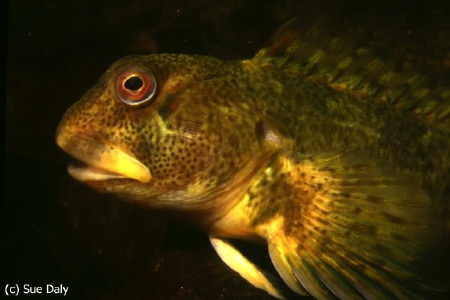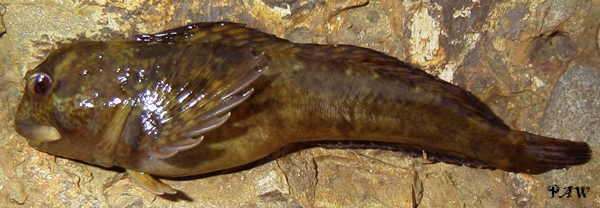
Common Name(s):Shanny, Smooth Blenny, Common Blenny, Sea-frog, Shan.
Scientific Name:
Lipophrys pholis (=Blennius)
Usual Size:165 mm
UK Record Weights from rod/line:
Shore:
Boat:
MAFF Minimum Size: Shore: Boat:
Shanny
 |
Fact File:
Common Name(s):Shanny, Smooth Blenny, Common Blenny, Sea-frog, Shan.
Scientific Name: Usual Size:165 mm UK Record Weights from rod/line: Shore: Boat: MAFF Minimum Size: Shore: Boat: |
| Identification: A small to medium-sized blenny, elongate small fish of a large family of fishes that live in rocky areas in shallow water. All true blennies have a continuous dorsal fin with the first dorsal fins are spiny and the remainder are soft. The pectoral finds are relatively large. The pelvic fin is in a jugular position. Distinguished by the absence of tentacles/lappets over the eye. Usually green with black mottling, adults may be grey with black. Males in breeding livery go all black with a white mouth and an attractive pale blue fringe to the long dorsal fin. If the small green blenny has blue spots and a lappet over the eye it is the similiar but rarer Coryphoblennius galerita.
Similar species:
Coryphoblennius galerita, Parablennius gattorugine
(Tompot Blenny).
Breeding:
Habitat:
Food:
Range:
Additional Notes:
Information wanted:
Additional Link: |

Return to the